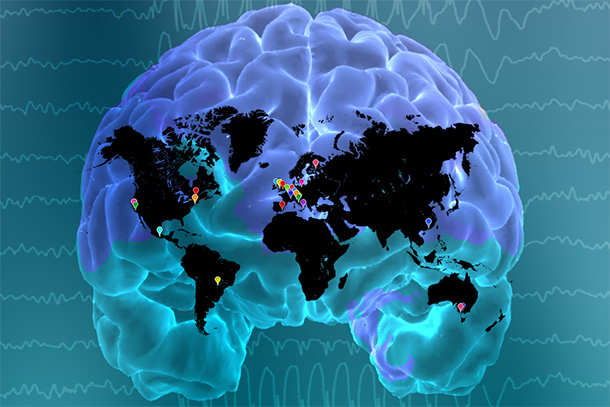Researchers at the USC Mark and Mary Stevens Neuroimaging and Informatics Institute are one step closer to understanding how autism affects the human brain across the lifespan. One of the largest-ever brain morphometry studies of autism, led by the Enhancing Neuro Imaging Genetics through Meta-Analysis autism spectrum disorders working group (ENIGMA-ASD), was published in the American Journal of Psychiatry in April.
Paul M. Thompson, PhD, professor of ophthalmology, neurology, psychiatry and the behavioral sciences, radiology and engineering at the Keck School of Medicine of USC, director of the Imaging Genetics Center and principal investigator of ENIGMA, and Neda Jahanshad, PhD, assistant professor of neurology at the Keck School, contributed to the study.
“Autism is hard to treat because we lack a deep understanding of how children with autism develop differently, and how best to nurture their brain development,” said Thompson, who is associate director of the institute. “With our global alliance — now studying thousands of children across the world — we are starting to see distinctive brain features in children with autism, and learn how the brain adapts throughout life; we are beginning to have the power to rigorously test and verify factors that may be beneficial for different children.”
The study analyzed MRI scans to identify differences in cortical and subcortical structures between 1,571 patients with ASD and 1,651 healthy controls. Participants from 49 different imaging centers, ages 2 to 64, were included in the analysis. Researchers examined differences in subcortical volumes, cortical thickness and surface area.
ASD subjects had smaller volumes in several brain structures, including the pallidum, putamen, amygdala and nucleus accumbens; they also had decreased cortical thickness in the temporal cortex and increased thickness in the frontal cortex. Cortical development appeared to be most impacted during adolescence, when large differences in thickness were observed. The analysis has led to the first definitive maps of the affected brain regions.
The ENIGMA consortium performs some of the largest neuroimaging studies of rare genetic diseases and psychiatric disorders such as schizophrenia and bipolar disorder, focusing on the interaction between brain health and genetics. The group currently investigates 22 diseases, with researchers in 37 countries analyzing data from more than 53,000 subjects.
— Zara Abrams


